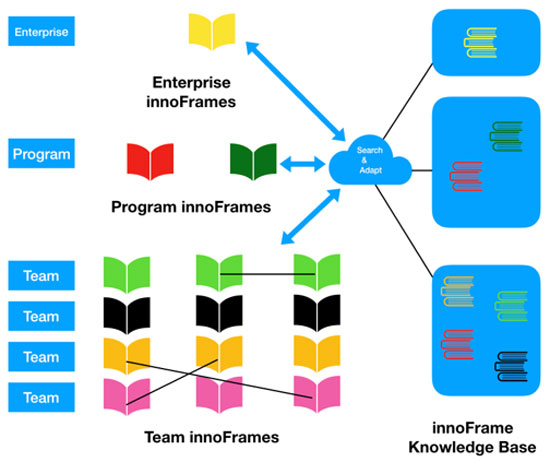Innovation is listed among the top priorities of organizations trying to getter better at what they do to beat the competition. However, in many cases, the act gets limited to a team or a segment within the organization. Scaling up innovation aids an enterprise in accumulating the best ideas from every nook and corner and conceiving a giant brand new idea. In this Advisor, we present a framework that scales innovation up continuously.
Innovation
Innovation is commonly seen as the process of making changes in something established with new ideas. The important part here is the use of the ideas/concepts in an unconventional or unintended manner to bring about the change. For instance, using the biological processes of nature to invent a new engineering paradigm, or observing the behaviors of birds to define new concepts in management science.
In the Agile world, where change is always invited, innovation plays a crucial role in continuous improvement activities. Agile teams strive to get better all the time through their retrospectives and problem-solving sessions. However, in many cases, the ideas and subsequent solutions get limited to the teams or, in better cases, a limited group of teams. This keeps the innovation limited to a specific segment within the organization, and the benefits may not be exploited beyond that segment.
Some frameworks like SAFe (Scaled Agile Framework) do leave some scope for innovation in a special sprint called IP sprint. However, it stops at that and provides no specific guidelines in an effort to avoid being prescriptive. It is for the teams to decide what to do in that timebox. However, the need of the hour is to manage the ideas distributed across the enterprise. (There have been scholarly articles and books on distributed innovation.)
The Distributed Innovation Framework
We created the Distributed Innovation Framework (DIF) to provide a customizable way to scale up the innovation activities (see Figure 1). The teams conduct an innovation workshop and the ideas the team decides to implement that were collected in that workshop are separated into a knowledge structure called innoFrame. The innoFrames may be accessed by other members of the enterprise to enhance their own innovative ideas. The enterprise-wide knowledge base, consisting of innoFrames, helps the interested parties search related innoFrames and adapt them to their situations.

Each team conducts the innovation workshop on a specific cadence, irrespective of the process framework they use but preferably after the retrospective. The innoFrames could be entirely new or be built upon some of the existing ones. For instance, a team member, trying to develop an innovative way to conduct the stand-up meetings may first look for the ideas already existing in the knowledge base and build upon them after suitable adaption.
Praveen Gupta, in his book on “Brinnovation,” discusses the concept of combining various ideas to innovate. We extend that concept here to scaling.
The process is straightforward:
-
Teams generate innoFrames and enhance the innoFrame knowledge base.
-
The programs innovate, sometimes deriving ideas from the team innoFrames.
-
The enterprises follow suit, sometimes deriving ideas from the program innoFrames.
InnoFrame Structure
InnoFrames carry the structure shown in Table 1 for efficient data/knowledge management and effective knowledge adaption. Currently the search is manual and based on keywords, but may be extended in the future to an intelligent search.

Future Work
Though the current focus of the framework is on the teams, programs, large solutions, value streams, and portfolios within an enterprise, it can be extended beyond the scope of an organization. With the advances in automation, big data, and AI-based techniques, the search/adapt module can become wiser and, with the willingness of the organizations to publish their data globally, the DIF can be used as a global framework.




